
Even if it remains buzzy and boring sounding, this new engine is high revving and peppy, and Kawasaki installed it in a chassis that’s mostly up to the task of capitalizing on that performance. Sure, the Eliminator will cruise around town as cool as a cucumber, but it can also rip down a twisty road and fly along the freeway at 80 mph, with speed to spare. Grandad would approve.
Cruiser credentials
If a long and low profile stokes your interest, the Eliminator checks that box. Kawasaki bobbed the fenders and kept the tank short to accentuate the bike’s length, while fat tires on 10-spoke wheels, twin shocks, and a round headlight and dash complete the look.

With a claimed curb weight of 388 pounds and a low 28.9-inch high seat, the Eliminator’s name is the most intimidating thing about it. As any new or smaller rider would want, the bike is highly approachable. The shortest attendee at the press launch was just five feet, one inch tall and she was able to get both feet on the ground and manage the bike confidently. At the same time, the bike’s two-thirds scale and thoughtful ergonomic layout fit my five-foot, 11-inch frame well over the course of a 150-mile day.

The riding position is a little more upright and neutral than a traditional cruiser due to the centrally located footpegs, but that’s to the rider’s benefit, since you’re not carrying all of your weight on your sit bones. Scooped saddles often restrict your movement, but this seat provides some leeway fore and aft. Repositioning is helpful for relieving pressure on your backside when the thin foam starts to wear on you, but the biggest benefit is being able to scoot back onto the incline so you’re braced against the wind blast on the highway. As it turns out, this bike is a mile-eater. More on that later.
Hit the road
The Eliminator juxtaposes classic cruiser characteristics with an unconventional engine feel and surprising performance. That’s an odd sentence, so just know that the Eliminator is a good motorcycle, but might not deliver the riding experience you’d expect, based on its style.

On the one hand, the riding position is fairly status quo, so cool looking and comfortable, while a limited 3.2 inches of rear suspension travel will introduce newbs to the time-honored cruiser tradition of scanning for bumps in the road.
Then there’s the Ninja-derived engine, which may align with Eliminator heritage, but is a bit frenetic for the class. It packs a lot of high-frequency vibration into the lower half of the tachometer where you spend most of your time, then focuses the bulk of its acceleration in the upper half of the 11,000-rpm rev range, where you’re less likely to venture.

Kawasaki doesn’t provide power figures, but one employee explained that they’re listed on every bike’s certificate of origin, and the Eliminator’s read 52 horsepower at 10,000 rpm and 32 foot-pounds of torque at 8,000 rpm. Those peaks arrive at the same rpm as the 398 cc Ninja 400, but are eight horsepower and five foot-pounds higher. That’s a lot more performance for 53 cc, and it leaves me craving a Ninja 450 or better yet a Versys 450. But I digress, we’re talking about the Eliminator.
So, engine character lands pretty far from the bullseye of smooth and loping. Big deal. This new twin makes up for things with exciting acceleration that lazier cruisers like Honda’s Rebel 500 or Royal Enfield’s Meteor 350 can’t match. At the same time, there’s a touch more cornering clearance than is normal and a totally neutral chassis that dissects curves better than anything with a nearly 60-inch wheelbase and almost five inches of trail has a right to.
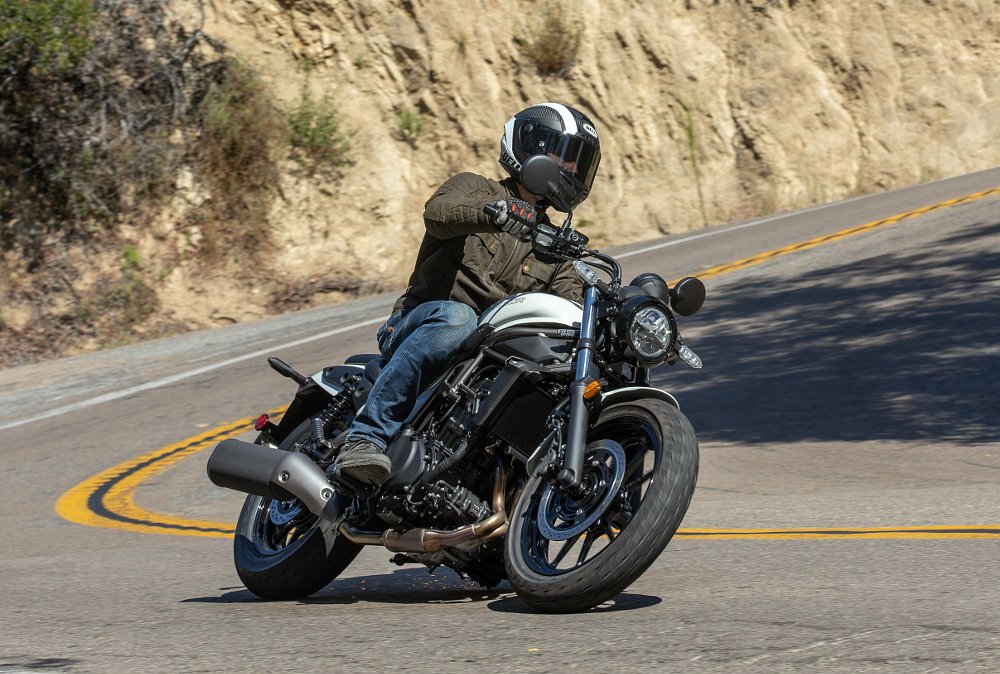
Despite balloon tires and relaxed geometry, the Eliminator changes directly quickly and holds a line as well as a Z400. The suspension gets flustered by rough pavement, but thankfully the drama is restricted to the wheels, so the chassis remains calm. Adding a dose of rear brake to supplement the soft front brake is an effective strategy for slowing down, and with the safety net of ABS you don’t have to worry about accidentally locking either wheel.
After the press launch in northern San Diego County, I rode the Eliminator 75 miles back to the RevZilla West office, averaging between 70 and 85 miles per hour. At those speeds the motor is in its sweet spot, spinning (relatively) smoothly between 6,000 and 7,500 rpm, with 45 mpg showing on the dash. There’s plenty of roll-on power for passing, and if you scoot back on the seat you’re well balanced against the headwind. It’s yet another unexpected but appreciated trait for this sporty cruiser.
Assessing the Eliminator
A new mid-size cruiser is a welcome addition to motorcycling. Low seat heights, a relaxed riding position, and casually cool style make cruisers an attractive entry point for new riders, but there haven’t been many options between the pint-size beginner bikes and 500-pound rigs that may be too big for smaller or inexperienced riders. That’s where the Eliminator slots in, alongside previously mentioned models like the Rebel 500 and Meteor 350.

At $6,949 (with ABS), the Eliminator is the priciest of the bunch. The Rebel is slightly cheaper at $6,749 and has a smoother engine, but it’s also down on power and weighs another 20 or so pounds. The $4,699 Meteor is mighty affordable and its style is pure heritage. However, it has an anemic single-cylinder engine that’s made to feel even slower due to a hefty 421-pound claimed curb weight.
The Eliminator fills a void in Kawasaki’s lineup, and other than annoying high-frequency vibrations in the grips and seat, there’s no meaningful drawback to cruising on this Kawi. Like the Vulcan 650, the entry level Eliminator provides appealing cruiser style while slyly sneaking in more comfort and better performance than is normal for the class.
And with any luck, we’ll see this 451 cc engine in a new Ninja and Versys in the near future, because those bikes would be a good fit for the motor’s character and make better use of its performance.
| Year make model | |
|---|---|
| Price (MSRP) | $6,649 base; $6,949 with ABS; $7,249 for SE model |
| Engine | 451 cc, liquid-cooled, eight-valve, parallel twin |
|
Transmission, final drive |
Six-speed, chain |
| Claimed horsepower | 52 @ 10,000 rpm |
| Claimed torque | 32 foot-pounds @ 8,000 rpm |
| Frame | Tubular-steel trellis |
| Front suspension | Showa 41 mm fork; 4.7 inches of travel |
| Rear suspension | KYB shocks, adjustable for spring preload; 3.1 inches of travel |
| Front brake | Nissin two-piston caliper, 310 mm disc; ABS optional |
| Rear brake | Nissin one-piston caliper, 210 mm disc; ABS optional |
| Rake, trail | 30.0 degrees, 4.8 inches |
| Wheelbase | 59.8 inches |
| Seat height | 28.9 inches |
| Fuel capacity | 3.4 gallons |
| Tires | IRC Grand High Speed, 130/17-18 front, 150/80-16 rear |
| Claimed weight | 388 pounds |
| Available | Now |
| Warranty | 12 months |
| More info | Kawasaki.com |


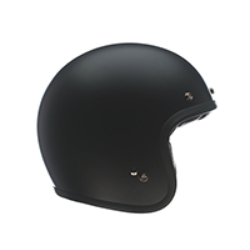

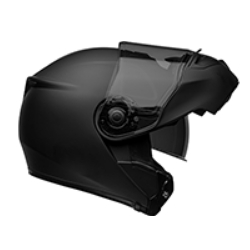

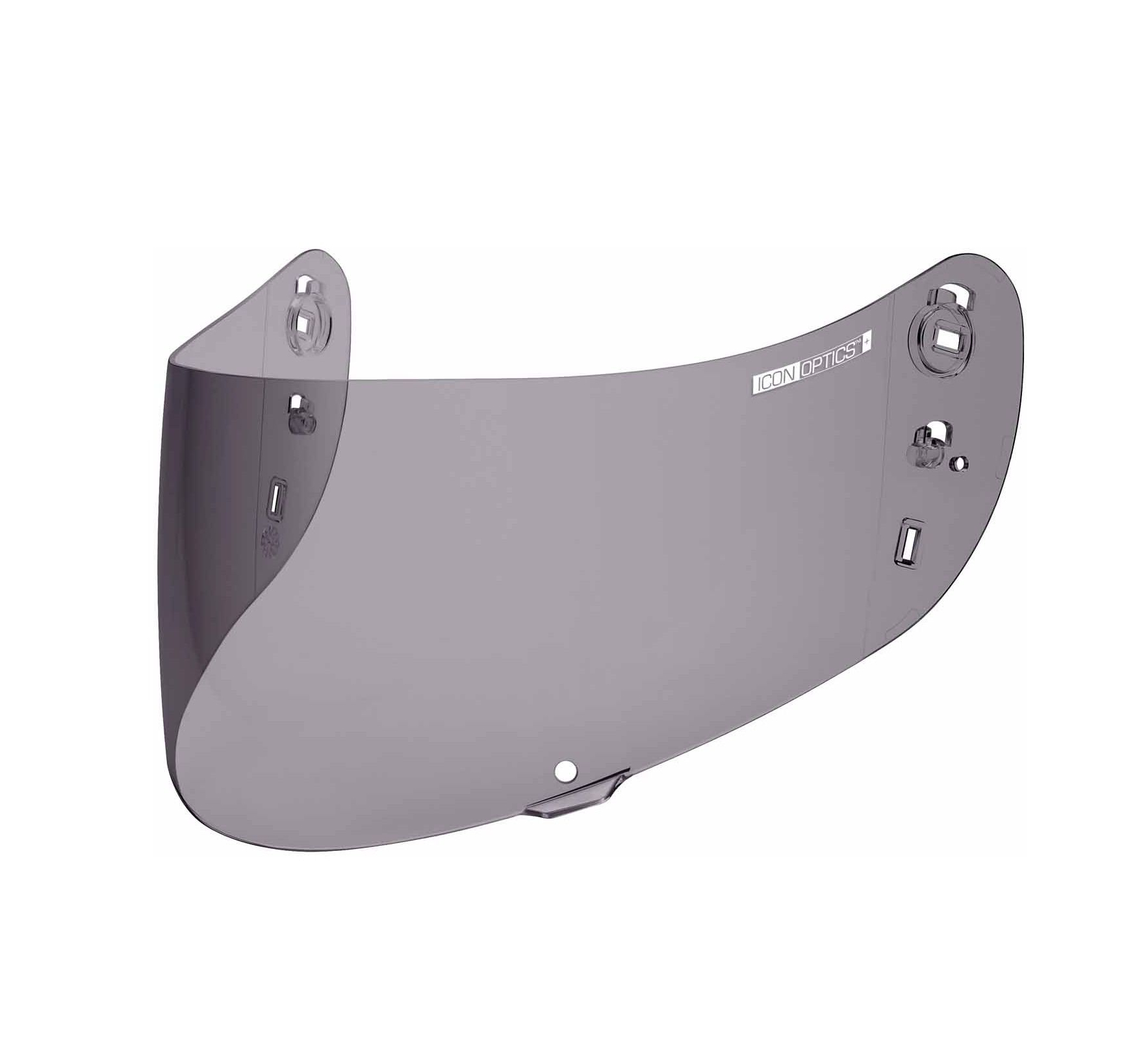
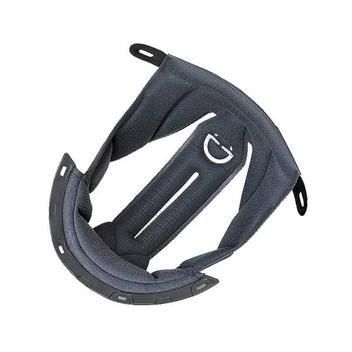
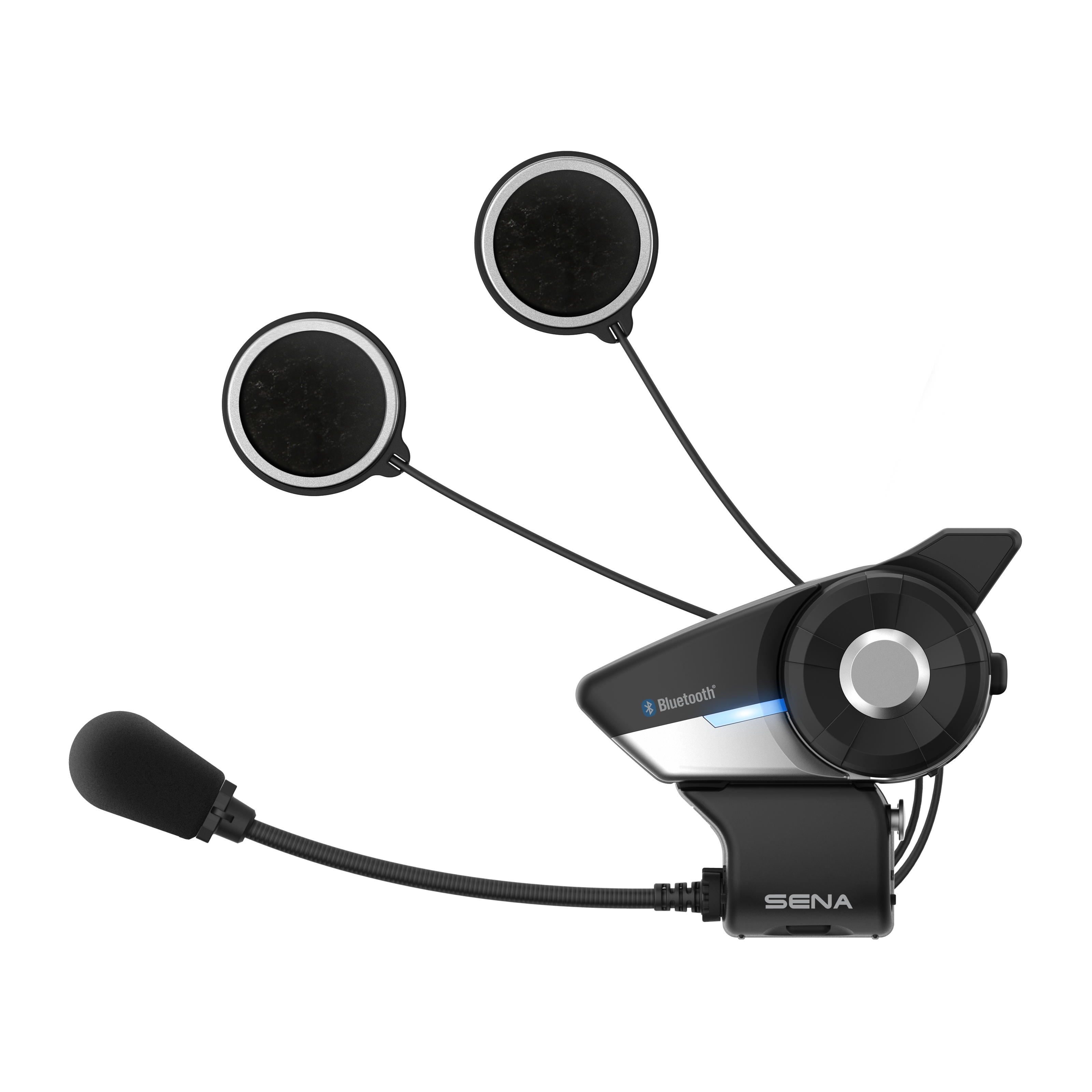


 Membership
Membership













